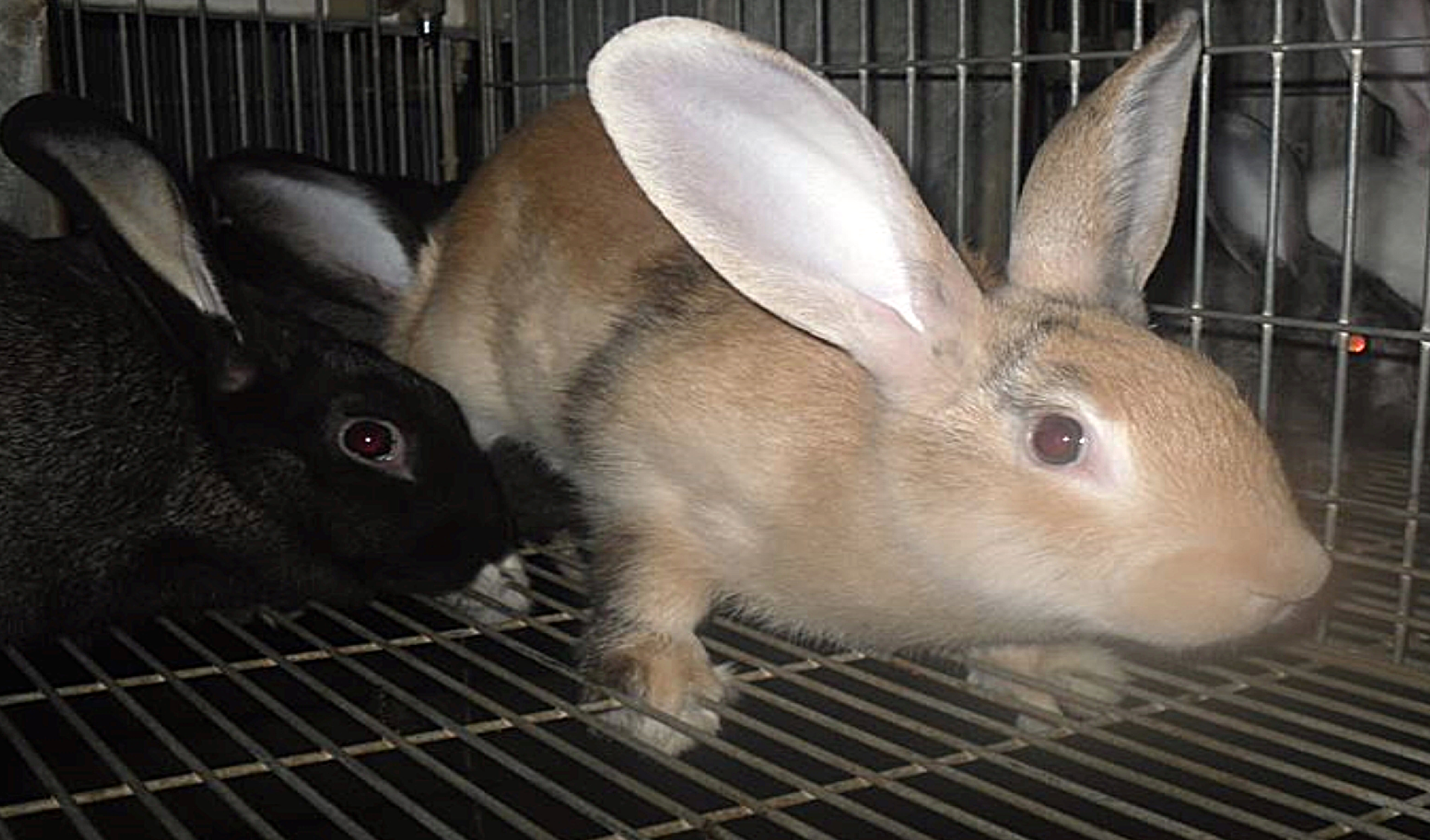Efecto de la incorporación de heno de alfalfa local o heno combinado con paja de trigo en la alimentación de conejos en crecimiento (Argelia)
DOI:
https://doi.org/10.19182/remvt.36976Palabras clave
conejo, alimentación de los animales, Medicago sativa, desempeño animal, ArgeliaResumen
El objetivo de este ensayo era analizar el interés de utilizar alimentos disponibles localmente en la alimentación cunícola, como el heno de alfalfa y la paja de trigo, para sustituir a la alfalfa deshidratada importada en Argelia. Se formularon dos tipos de pienso con, como fuente principal de fibra: solamente heno de alfalfa en uno (F, 40,1 %), y heno de alfalfa combinado con paja de trigo en el otro (F+P, 17 % heno + 14 % paja). En el destete (35 días), 154 conejos de la línea sintética ITELV 2006 se dividieron en tres grupos de idéntico peso vivo y se alojaron en jaulas colectivas (2–4 conejos/jaula) hasta la edad de sacrificio (84 días). Se les alimentó ad libitum con una de las dos dietas experimentales (F o F+P) o con una dieta comercial utilizada como control (Tém). La viabilidad de los conejos F fue mejor (90 %; +22 puntos porcentuales) que la de los conejos control (68 %) (p = 0,025), la viabilidad de los conejos F+P fue intermedia (79,6 %; +12 puntos porcentuales). El aumento de peso y el consumo de alimento fueron un 14 % y un 30 % superiores (p < 0,001) con F que con Tém (33,0 frente a 29,0 g/d y 92,8 frente a 71,4 g/d) respectivamente. El crecimiento y la ingesta de los conejos F+P fueron intermedios (29,9 g/d y 79,5 g/d). El rendimiento en carcasa fría y la medida de la adiposidad de la carcasa fueron más elevados (p < 0,05) con F, intermedios con Tém y menores con F+P (67,5 %, 66,4 %, 65,5 % y 3,85, 3,45, 3,30 respectivamente). La eficiencia económica fue un 23 % y un 44 % mayor cuando los conejos fueron alimentados con las dietas F y F+P respectivamente.
Descargas

Descargas
-
Resumen1680
-
pdf (Français)1074
Recibido
Aceptado
Publicado
Cómo citar
Número
Sección
Categorías
Licencia
© M.Adaouri et al., publicado por CIRAD 2023

Esta obra está bajo una licencia internacional Creative Commons Atribución 4.0.
Datos de los fondos
-
Direction Générale de la Recherche Scientifique et du Développement Technologique
Números de la subvención Programme national de la recherche





